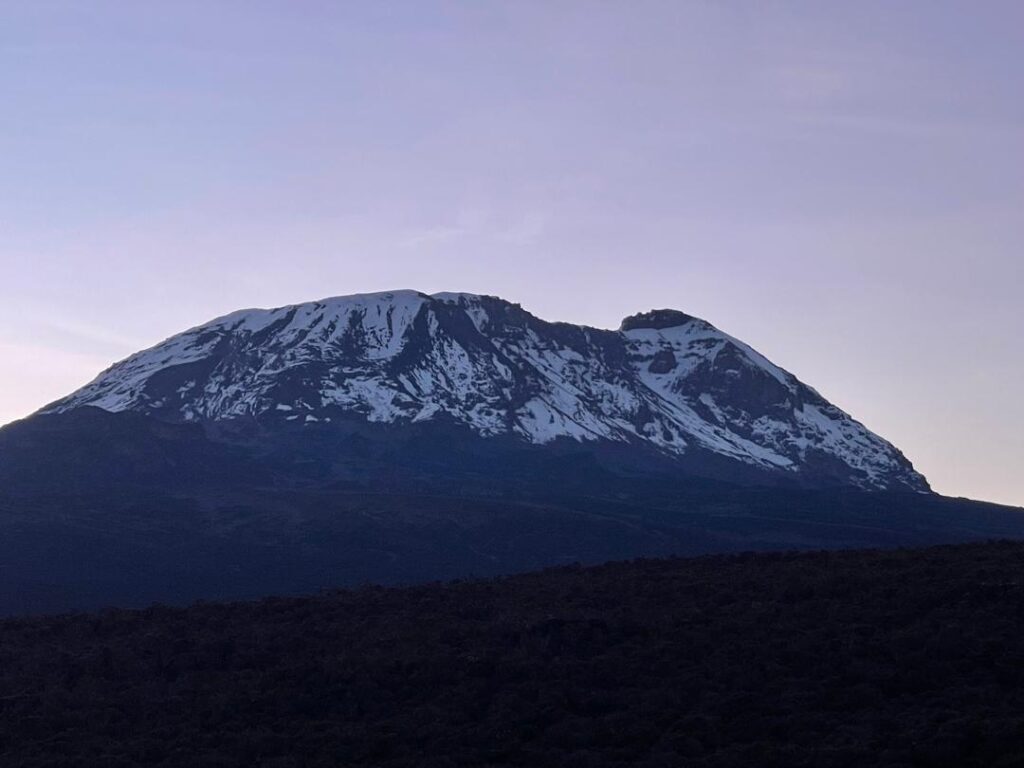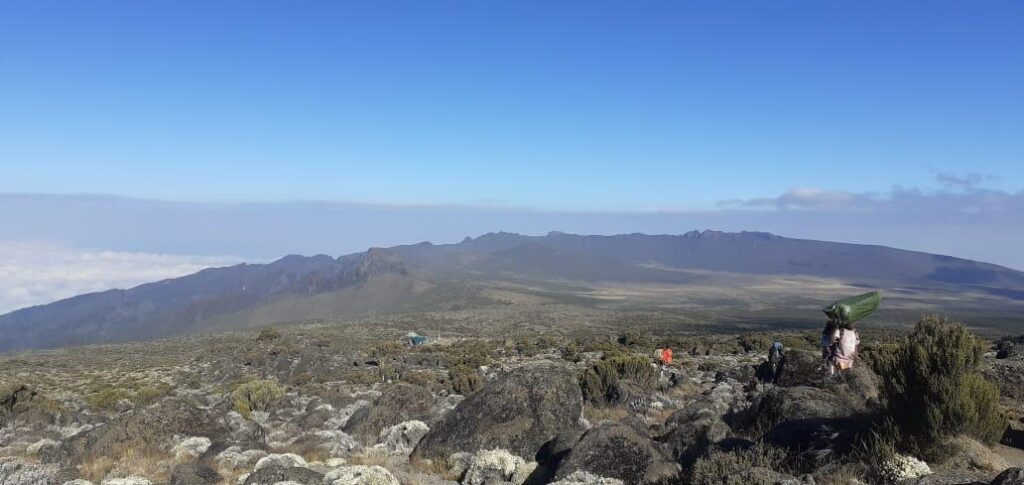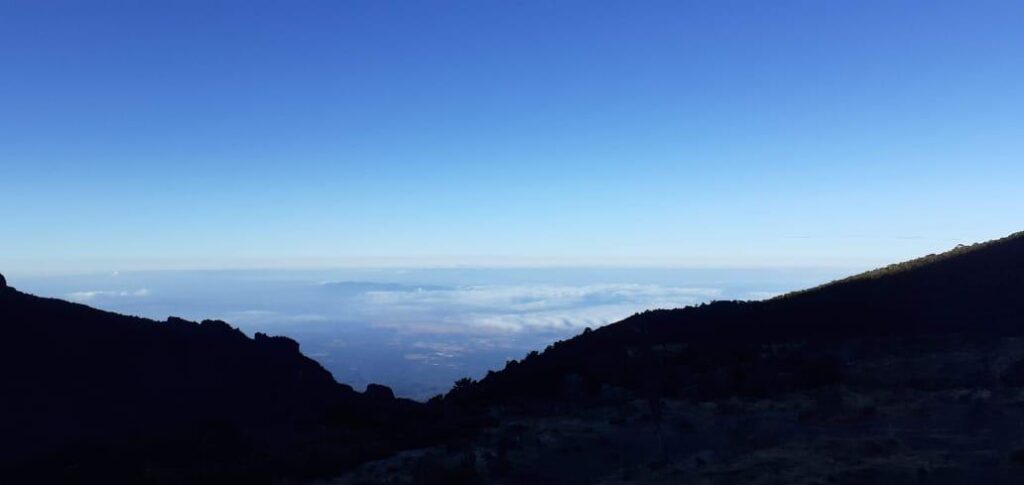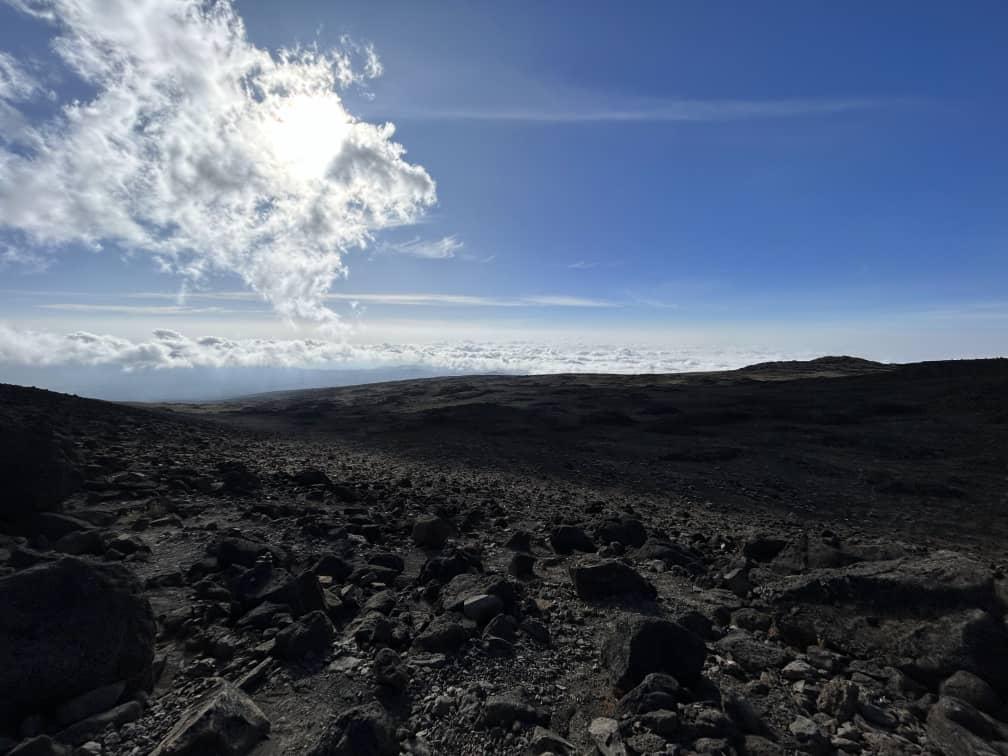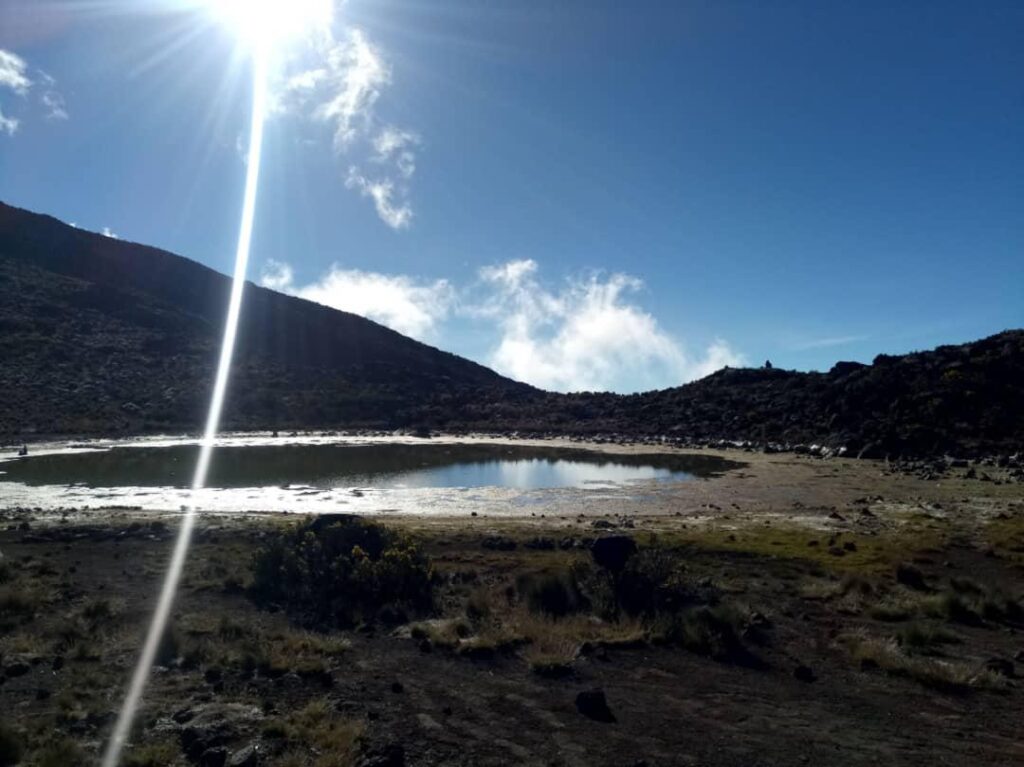That’s Why Climbing Mount Kilimanjaro Is an Unforgettable Experience
Imagine beginning your Mount Kilimanjaro climb in the tropical rainforest, as the first rays of sunlight filter through the dense canopy. With every step, you feel the landscape transform – from lush greenery to barren rock and finally to the icy summit region. A Kilimanjaro hike is a journey through five climate zones and a challenge that enriches you both physically and emotionally.
Climbing Kilimanjaro is more than just reaching the top of a mountain – it’s an adventure that pushes you beyond your limits and rewards you with breathtaking views. The moment you stand on the summit of Kilimanjaro and watch the sun rise over Africa will stay with you forever. Whether you’re traveling solo, with friends, or in a group – with our experience and the best guides by your side, this adventure will be safe, well-organized, and truly unforgettable.
We understand that climbing Kilimanjaro requires careful preparation. That’s why your Wildfinder team is always here to support you. Our experts will guide you through the best Kilimanjaro routes, preparation tips, and gear recommendations to ensure your adventure is nothing short of perfect.
Contact our Wildfinder team today and let us advise you individually - for an unforgettable adventure on Kilimanjaro!
What Are the Pros and Cons of Climbing Mount Kilimanjaro?
Climbing Mount Kilimanjaro is a unique experience that comes with many advantages, but also a few challenges.
Pros
- Unforgettable Adventure: Climbing the highest free-standing mountain in the world is a once-in-a-lifetime experience, rewarding you with spectacular views and breathtaking natural beauty.
- No Technical Climbing Skills Required: Unlike other high peaks, hiking Mount Kilimanjaro doesn’t require special climbing gear or mountaineering experience – good fitness and endurance are enough.
- Various Kilimanjaro Routes: Whether you prefer a challenging or more relaxed trek – there are several ascent routes that vary in difficulty, duration, and scenery, and can be tailored to your individual needs.
- Diverse Landscapes: From tropical rainforest and alpine desert to snow-covered peaks – on your way to Uhuru Peak, you’ll pass through five distinct climate zones.
- Challenge and Personal Growth: The climb is not only a physical but also a mental challenge that strengthens your perseverance and rewards you with an incredible sense of achievement.
- Perfect Combination with a Safari: After the demanding trek, you can relax with a Kilimanjaro safari combination and discover Tanzania’s impressive wildlife.
Cons
- Physical Effort: The climb requires a good level of basic fitness and can be quite exhausting, especially during the final stages.
- Weather Conditions: Cold, wind, and unpredictable weather can make the climb more difficult, especially at higher altitudes.
- Altitude Sickness: Due to the high elevation, symptoms of altitude sickness can occur on Kilimanjaro, which is why slow acclimatization is essential.
Combine Mount Kilimanjaro Climb and Safari – The Perfect Adventure
Imagine this: you’re standing on Uhuru Peak, the highest point in Africa. The sun rises on the horizon, and you’ve done it – you’ve climbed Mount Kilimanjaro. It’s a moment filled with pride, relief, and pure joy. But your adventure doesn’t end here – on the contrary, it’s just the beginning of the next unforgettable chapter!
Going on a safari after your climb is one of the most rewarding ways to let your body recover while adding even more unforgettable moments to your journey. After trekking across lava fields and glaciers, you’ll now find yourself in the vast plains of the Serengeti or at the edge of the Ngorongoro Crater – face to face with elephants, lions, and giraffes. This combination of physical challenge and relaxed immersion in nature is as unique as it is full of contrast.
Whether you choose a luxurious lodge or a cozy tented camp, the safari gives you the peace you deserve after reaching the summit. And the best part: at Wildfinder Tours & Safaris, we plan your journey individually and with years of experience. Our team will guide you in finding the route and safari that suit you best – so all you have to do is relax and be amazed.
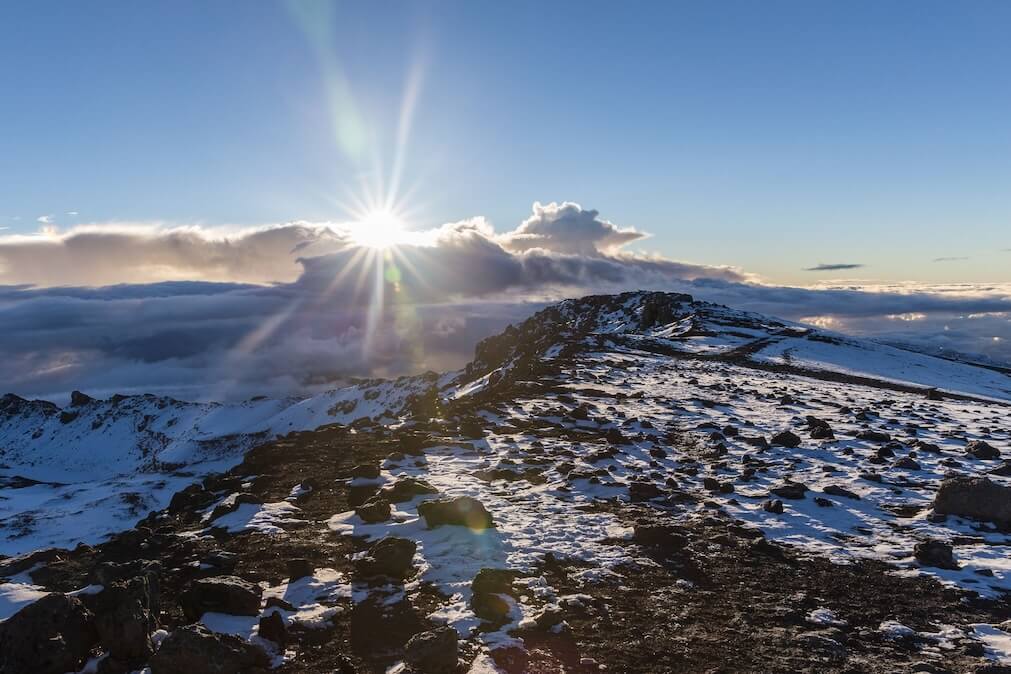
Routes for Climbing Mount Kilimanjaro – Which One Is Right for You?
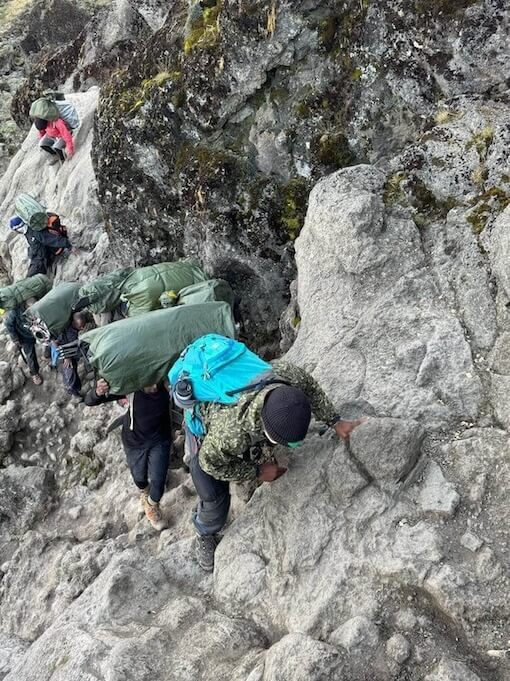
When it comes to trekking Mount Kilimanjaro, there isn’t one perfect route – it really depends on the type of experience you’re looking for. Each Kilimanjaro route has its own unique features, whether it’s the duration, scenic variety, or opportunities for acclimatization.
Mount Kilimanjaro takes you through a range of climate zones – from lush rainforest and rocky highland deserts to the icy summit region. While some routes offer more comfort and are better suited for beginners, others are more demanding and ideal for experienced trekkers looking for a challenge. Your choice should be based on how much time you have, what kind of views you want to enjoy, and how important good altitude acclimatization is to you.
If you’re planning to climb Kilimanjaro, proper preparation is key. Careful planning and the right Kilimanjaro packing list are essential to ensure you’re fully ready for the adventure. From warm clothing and sturdy hiking boots to proper nutrition – having the right gear makes the difference between a smooth trek and unnecessary struggles.
You’re probably asking yourself: “Which is the best route for climbing Kilimanjaro?”
In the next sections, we’ll take a closer look at the different Kilimanjaro routes so you can make the best decision for your climb.
The Marangu Route is one of the most well-known and popular Kilimanjaro routes – ideal for those who prefer a well-developed and more comfortable trail. It is the only route with permanent mountain huts, meaning you can count on weather-protected accommodations with beds and mattresses.
The ascent takes you through spectacular landscapes – from tropical rainforest and striking alpine desert to the snow-covered summit of Uhuru Peak. Thanks to its direct route, you’ll reach the highest point in Africa in a relatively short amount of time while enjoying breathtaking panoramic views.
If you’re looking for a classic and proven way to climb Kilimanjaro without giving up comfort, the Marangu Route is the perfect choice!
Features of the Marangu Route:
- Duration: 5–6 days
- Elevation Gain: Start at approx. 1,860 m, summit at 5,895 m
- Total Distance: Approx. 72 km (round trip)
- Accommodation: Huts (no tents required)
- Difficulty Level: Moderate, but demanding summit stage
- Landscape: Tropical rainforest, alpine desert, glacier zone
- Acclimatization: Lower than on longer routes
Advantages of the Marangu Route
- Fast Ascent: The Marangu Route is one of the shortest routes up Mount Kilimanjaro, often considered the fastest way to reach the summit. The ascent takes only 5 to 6 days, making it ideal for travelers with limited time.
- Permanent Accommodation: Unlike other routes, the Marangu Route offers overnight stays in mountain huts instead of tents. This means more comfort, protection from the elements, and less effort setting up camp.
- Direct Route: The trail follows a clearly structured path with moderate ascents, making it especially appealing for trekking beginners or those seeking a less technically demanding route.
- Cost-Efficient: Due to its shorter duration and the use of permanent accommodations on Kilimanjaro, the overall cost of this route is generally lower than that of longer trekking routes with tented overnight stays.
- Seasonal Advantages: During the rainy season, the Marangu Route is one of the best options, as the permanent huts offer better protection than tents. Additionally, the route remains accessible year-round.
Disadvantages of the Marangu Route
- Limited Acclimatization: Since the route only takes 5–6 days, there is less time for gradual altitude adjustment. This makes the risk of altitude sickness slightly higher compared to longer routes with better acclimatization strategies.
- Fewer Panoramic Views: Compared to other Kilimanjaro routes that circle different sides of the mountain, the Marangu Route offers fewer spectacular vistas. Ascent and descent follow the same path, limiting the variety of scenery.
- Steeper Sections: While most of the route is considered moderate, the summit stage can be very demanding. The final ascent to Uhuru Peak is steep and requires significant endurance.
- High Visitor Numbers: Due to its popularity, the Marangu Route is often more crowded than other trails. Especially during peak season, the trail and mountain huts can become quite busy.
- Less Varied Scenery: While the Marangu Route passes through beautiful vegetation zones, it lacks some of the dramatic landscape features found on other routes, such as the striking rock formations on the Machame or Lemosho Route.
Who Is the Marangu Route Suitable For?
The Marangu Route is ideal for trekkers who prefer a more comfortable option with permanent accommodations. It’s especially suitable for Kilimanjaro hiking beginners looking for a relatively short ascent. However, since it allows less time for acclimatization, the risk of altitude sickness is higher than on other routes.
If you’re looking for a classic, well-established route with hut accommodations and are ready to take on the challenge, then the Marangu Route could be the perfect choice for you!
The Machame Route is one of the most spectacular Kilimanjaro routes and perfect for anyone seeking a diverse adventure with stunning landscapes. It’s one of the most popular options for climbing Mount Kilimanjaro, as it offers breathtaking panoramas and excellent altitude acclimatization.
The route takes you through dense rainforest, past dramatic rock formations, and across alpine desert landscapes until you finally reach the majestic summit of Kilimanjaro. Thanks to the “climb high, sleep low” principle, your body adjusts better to the altitude, giving you the best possible chance of a successful summit. If you’re looking for one of the most scenic paths to the top, this route will reward you with unforgettable impressions!
Features of the Machame Route:
- Duration: 6–7 days
- Elevation Gain: Start at approx. 1,800 m, summit at 5,895 m
- Total Distance: Approx. 62 km
- Accommodation: Camping in tents
- Difficulty Level: Challenging, but with good acclimatization
- Landscape: Rainforest, moorland, alpine desert, glacier zones
- Acclimatization: Excellent, thanks to the altitude adaptation principle
Advantages of the Machame Route
- Spectacular Panoramas: The Machame Route offers some of the most stunning views of Mount Kilimanjaro. From dense rainforests and striking rock formations to vast high-altitude deserts – this route takes you through some of the most diverse landscapes in the entire region.
- Excellent Acclimatization: The route follows the “climb high, sleep low” principle, allowing your body to adjust optimally to the altitude. This significantly increases your chances of reaching the summit compared to shorter routes.
- Diverse Route Layout: Unlike the Marangu Route, the Machame Route does not follow the same path for ascent and descent, meaning you’ll discover new landscapes throughout the entire trek.
- Challenging Yet Achievable: The Machame Route is considered demanding but not technically difficult. This makes it ideal for trekking enthusiasts looking for an exciting yet manageable challenge.
- Great Combination of Adventure & Nature: With its fascinating climate zones, scenic camp locations, and diverse surroundings, the Machame Route is perfect for anyone seeking an immersive nature experience on their way to the summit.
- Seasonally Flexible: Since the route passes through various vegetation zones, it remains a good option for trekkers even during the transitional periods between dry and rainy seasons.
Disadvantages of the Machame Route
- Longer Overall Duration: At 6–7 days, the Machame Route takes slightly longer than the Marangu Route. Those looking for a quicker Kilimanjaro climb should keep this in mind.
- Steep Ascents: Certain sections of the route are particularly steep – especially the climb up the famous Barranco Wall, which requires good physical condition. While no technical climbing skills are needed, the trail is still demanding.
- Tent Accommodations: Unlike the Marangu Route, the Machame Route offers no permanent huts, only tent camping. While this adds to the sense of adventure, it also means less comfort and greater exposure to weather conditions.
- High Popularity: As one of the most scenic routes, the Machame Route attracts many trekkers. During peak season, some camps can become more crowded.
- Weather-Exposed: Due to its path along open mountain slopes, the Machame Route can be more exposed to strong winds and fluctuating temperatures.
Who Is the Machame Route Suitable For?
The Machame Route is perfect for anyone looking for a varied yet manageable trek. It’s especially suited for trekkers with a good level of fitness who are excited about a multi-day adventure with tented overnight stays. If you want to enjoy spectacular scenery and experience one of the best routes to the summit, the Machame Route is an excellent choice!
The Lemosho Route is considered one of the most beautiful and diverse routes, making it ideal for those who want to experience a longer yet manageable trek with breathtaking scenery. It offers excellent conditions for a successful Kilimanjaro climb, as it allows for gradual altitude acclimatization and significantly increases summit success rates.
The ascent begins in lush rainforest, where, if you’re lucky, you might spot colobus monkeys. The route continues through expansive moorlands and heathlands, across spectacular rock formations, into alpine desert, and finally into the icy summit zone. Thanks to its extended duration, the Lemosho Route is especially popular among trekking enthusiasts who seek an immersive nature experience and value optimal altitude adjustment.
Features of the Lemosho Route:
- Duration: 7–8 days
- Elevation Gain: Start at approx. 2,100 m, summit at 5,895 m
- Total Distance: Approx. 70 km
- Accommodation: Camping in tents
- Difficulty Level: Moderate to challenging, but with excellent acclimatization
- Landscape: Rainforest, heathland, alpine desert, glacier zones
- Acclimatization: Excellent, thanks to extended trekking time and ideal altitude adjustment
Advantages of the Lemosho Route
- One of the Most Scenic Routes: The Lemosho Route leads through some of the most stunning landscapes of the Kilimanjaro massif – from dense rainforests and expansive heathlands to rugged alpine deserts and the snow-covered summit region.
- Excellent Acclimatization: The route is longer than many others and allows for especially effective altitude adjustment. This significantly increases the chances of reaching the summit and makes the climb more comfortable.
- Fewer Tourists: Compared to the Machame Route, the Lemosho Route is less crowded – especially during the first few days, as the trail begins on the western side of the mountain, which is less frequented.
- Unique Start in the Rainforest: The route begins in a remote, forested area where, with a bit of luck, you may spot colobus monkeys and other wildlife.
- High Success Rate: Thanks to its longer duration and better altitude profile, the Lemosho Route is among the routes with the highest summit success rates.
- Diverse Landscapes: Unlike the Marangu Route, the Lemosho Route does not follow the same path for ascent and descent, allowing you to discover new panoramas throughout the entire trek.
Disadvantages of the Lemosho Route
- Longer Overall Duration: At 7–8 days, the Lemosho Route is longer than other Kilimanjaro routes, meaning you’ll need to plan more time for your climb.
- Tent Accommodations: There are no permanent shelters on this route – all overnight stays take place in tents, requiring a greater sense of adventure and adaptability.
- Higher Costs: Due to its longer duration, the need for additional permits, and a higher number of porters, the Lemosho Route can be slightly more expensive than other routes.
- Less Well-Known: While the Machame and Marangu routes are widely recognized, the Lemosho Route is less well-known – but that’s exactly what makes it so charming!
Who Is the Lemosho Route Suitable For?
The Lemosho Route is ideal for anyone seeking an immersive Kilimanjaro trekking experience with excellent acclimatization and breathtaking natural scenery. It’s especially suitable for trekkers who prefer a longer journey with a moderate ascent and want to fully embrace the adventure of nature. If you’re looking to explore one of the most beautiful Kilimanjaro routes, the Lemosho Route is a perfect choice!
The Rongai Route is the only trail that begins from the northern side of the mountain and is considered one of the quietest options for a Kilimanjaro climb without prior experience. The route starts near the border with Kenya and takes you through stunning landscapes, ranging from lush forests and dry highland plains to snow-covered summit zones. Because it lies on the drier side of Kilimanjaro, it’s also a great choice during the rainy season.
Although this route is considered one of the easier options, it shouldn’t be underestimated – especially the final stage to Uhuru Peak, which requires a good level of endurance. Thanks to its moderate incline and well-structured daily stages, the Rongai Route is an excellent choice for first-time trekkers and anyone wanting to discover a unique side of Kilimanjaro.
Features of the Rongai Route:
- Duration: 6–7 days
- Elevation Gain: Start at approx. 1,950 m, summit at 5,895 m
- Total Distance: Approx. 73 km
- Accommodation: Camping in tents
- Difficulty Level: Moderate, with a demanding summit stage
- Landscape: Dry savannah region, heath and moorland, alpine desert, glacier zones
- Acclimatization: Good, but not as ideal as on the Machame or Lemosho Route
Advantages of the Rongai Route
- Quick Ascent / Time Efficiency: The route can be completed in 6–7 days, offering a good balance between a swift climb and sufficient acclimatization. It’s a great option for those who prefer a faster, yet not rushed, ascent.
- Panorama and Views: As the Rongai Route runs along the northern side of Kilimanjaro, it offers a rare perspective of the mountain. The views of Kenya’s savannah landscape are unique and not found on other routes.
- Moderate Incline: The route is characterized by a steady and gentle ascent, making it technically easier than other routes. The climb is less steep than on the Machame or Umbwe Route, which makes it especially appealing for trekking beginners.
- Fewer Tourists: The Rongai Route is one of the quietest trails on Kilimanjaro. If you want to avoid crowds and enjoy a more intimate nature experience, this route offers ideal conditions.
- Cost-Efficient Choice: As the route is shorter than options like the Lemosho Route and offers a more efficient ascent due to its steady incline, it can be a comparatively more affordable alternative to other routes.
- Weather Resilience: The northern side of Kilimanjaro is drier than the southern routes. This makes the trail more accessible during the rainy season and offers better visibility conditions.
- Good Acclimatization: Although not as ideal for acclimatization as the Machame or Lemosho Route, the inclusion of additional acclimatization days provides a solid foundation for a successful summit attempt.
Disadvantages of the Rongai Route
- Less Varied Scenery: Since the route passes through a relatively dry region, it lacks the lush rainforests and dramatic rock formations found on other Kilimanjaro routes. The ascent is visually less diverse compared to routes like Machame.
- Longer Transfer to the Starting Point: Since the route begins on the northern side of the mountain, getting there takes longer compared to the southern routes. Those with limited time should factor this into their planning.
- Less Effective Acclimatization Compared to Other Routes: The route initially follows relatively consistent elevation levels, which can slow the body’s adaptation to altitude. Those prone to altitude sickness should consider adding an extra acclimatization day.
- Tent Accommodations: Unlike the Marangu Route, the Rongai Route offers no huts but only tented overnight stays. Those seeking more comfort should take this into consideration.
- Seasonal Limitations: Although the route is drier than others, it can become very dusty during the dry season, while occasional weather changes are still possible during the rainy season.
Who Is the Rongai Route Suitable For?
The Rongai Route is perfect for anyone looking to experience a Kilimanjaro climb away from the large crowds. It is especially suited for trekkers who prefer a quieter and less frequented trail. If you’re looking for a technically easy yet exciting route with beautiful landscapes and a unique perspective of the mountain, the Rongai Route is an excellent choice.
The Shira Route is one of the most breathtaking trails, leading across the stunning Shira Plateau, which stretches at an altitude of around 3,500 meters. It offers trekking enthusiasts a unique opportunity to reach the summit of Kilimanjaro on a less-traveled route with spectacular panoramic views.
This route starts at one of the highest trailheads of all Kilimanjaro routes, meaning you immediately enter a high-altitude landscape with wide, open plains. If you’re looking for an alternative route with incredible views, a peaceful atmosphere, and diverse scenery, you’ll love the Shira Route. It shares much of its path with the Lemosho Route but begins at a higher elevation, offering a different kind of experience. To be fully prepared, it’s especially important to follow solid Kilimanjaro trekking tips – as the quick gain in altitude makes proper acclimatization essential.
Features of the Shira Route
- Duration: 6–8 days
- Elevation Gain: Start at approx. 3,500 m, summit at 5,895 m
- Total Distance: Approx. 70 km
- Accommodation: Camping in tents
- Difficulty Level: Moderate to challenging
- Landscape: Expansive high plateau, moorland, alpine desert, glacier zones
- Acclimatization: Challenging, as the starting point is already at high altitude
Advantages of the Shira Route
- Quick Ascent / Time Efficiency: The route can be completed in 6–7 days, offering a good balance between a swift climb and sufficient acclimatization.
- Panorama and Views: The Shira Route crosses the spectacular Shira Plateau, one of the most impressive areas of Kilimanjaro. Its wide, open landscapes offer magnificent views of the mountain and the surrounding plains.
- Moderate Incline: The trail runs across relatively even terrain before entering more demanding high-altitude zones, making the initial ascent manageable and pleasant.
- Fewer Tourists: The Shira Route is one of the less frequented trails, making it especially attractive for trekkers seeking a quieter and more exclusive experience.
- Diverse Route Layout: The trail combines the vast Shira Plateau with the later sections of the Lemosho Route, allowing trekkers to experience multiple vegetation zones and a variety of landscapes.
- High Success Rate: With its moderate length and the option to include additional acclimatization days, the route offers a solid foundation for a successful summit attempt.
Disadvantages of the Shira Route
- Very High Starting Point: The route begins at around 3,500 m, meaning trekkers ascend to high altitude early on. This increases the risk of altitude sickness, as there is no gradual adjustment in the lower elevation zones.
- Limited Acclimatization: Due to the quick start at high altitude, natural acclimatization is more difficult compared to other routes. Those who don’t adapt well to high elevations may want to choose a route with a lower starting point.
- Long Transfer to the Starting Point: The route begins in a remote area west of the mountain, which requires a longer jeep transfer to reach the trailhead.
- Tent Accommodations: The entire trek involves camping, as there are no huts available along the route.
- Seasonal Limitations: During the rainy season, the Shira Plateau can become muddy and more difficult to navigate. In the dry season, strong winds can pose an additional challenge.
Who Is the Shira Route Suitable For?
The Shira Route is ideal for experienced trekkers looking to climb Kilimanjaro on a trail with unique landscapes and fewer crowds. Due to its high starting point, it’s especially suitable for travelers who already have experience at high altitudes or can include an extra acclimatization day. If you’re seeking a less-traveled yet spectacular route with fantastic summit views, the Shira Route is an excellent choice!
The Umbwe Route is the steepest and most direct of all Kilimanjaro routes, known as the ultimate challenge for experienced trekkers. If you’re seeking an extremely demanding climb, this is the route for you. It features steep ascents, narrow paths, and rapid altitude gain – perfect for mountaineers ready to take on a serious challenge.
Due to the fast elevation gain, it’s especially important to be well-prepared and apply proper strategies to prevent altitude sickness during Kilimanjaro trekking. The Umbwe Route is not for beginners, but rather for seasoned trekkers who know how their body responds to high altitudes. In return, it rewards you with untouched nature, dramatic mountain scenery, and an exclusive, nearly crowd-free trail.
Features of the Umbwe Route:
- Duration: 5–6 days
- Elevation Gain: Start at approx. 1,600 m, summit at 5,895 m
- Total Distance: Approx. 53 km
- Accommodation: Camping in tents
- Difficulty Level: Very challenging
- Landscape: Dense rainforests, steep mountain slopes, alpine desert region
- Acclimatization: Difficult due to rapid altitude gain
Advantages of the Umbwe Route
- Quick Ascent / Time Efficiency: With just 5–6 days, the Umbwe Route is one of the fastest ways to reach the summit – ideal for climbers who prefer a swift ascent.
- Panorama and Views: The route is visually stunning, offering breathtaking views of steep mountain faces, deep valleys, and rugged rock formations.
- Extremely Challenging but Rewarding Route: The steep ascents and technical sections make this trail a true challenge for experienced trekkers. If you're looking for a demanding and intense route, this one will definitely deliver.
- Hardly Any Tourists: Due to its high difficulty level, this route is rarely used, allowing you to enjoy the mountain almost entirely to yourself and experience a uniquely exclusive adventure.
- Direct Ascent: Since the route leads very directly to the summit, unnecessary detours are avoided, making the overall trek shorter.
Disadvantages of the Umbwe Route
- Extremely Steep Ascent: This route is considered the steepest on Kilimanjaro. It is therefore not suitable for beginners and requires excellent physical fitness.
- Very Rapid Altitude Gain: The Umbwe Route is notorious for its quick ascent to high elevations, which increases the risk of altitude sickness. There is little opportunity for gradual acclimatization.
- Not Ideal for All Seasons: During the rainy season, the steep trail can become slippery and more difficult to navigate, making the climb even more challenging.
- Tent Accommodations: There are no permanent shelters along the trail, so all overnight stays take place in tents.
- Higher Technical Demands: While other routes consist mostly of trekking paths, the Umbwe Route includes sections that could almost be considered via ferrata-like climbs.
Who Is the Umbwe Route Suitable For?
The Umbwe Route is ideal for experienced mountaineers and trekking enthusiasts looking to take on the ultimate challenge. Those with excellent physical fitness and prior high-altitude trekking experience will find this route to be an unmatched adventure. Due to its extremely steep ascents and rapid altitude gain, it is not suitable for beginners—but for adventurers with strong physical and mental endurance, it’s a top-tier choice.
The Northern Circuit Route is the longest, yet also one of the most spectacular Kilimanjaro routes. It offers an extraordinary trekking experience with breathtaking scenery and the best acclimatization of all routes. Those who choose this trail embark on an extended Kilimanjaro hike that largely follows remote paths and provides unique views of the mountain’s northern side.
Thanks to the longer trekking duration, it is the safest choice for a successful Kilimanjaro summit, giving the body ample time to adapt to the altitude. This route combines Kilimanjaro’s scenic highlights with a quiet, less-traveled trail. If you’re looking for an exceptional Kilimanjaro trek with maximum summit success, you’ll love the Northern Circuit Route!
Features of the Northern Circuit Route:
- Duration: 8–9 days
- Elevation Gain: Start at approx. 2,100 m, summit at 5,895 m
- Total Distance: Approx. 98 km
- Accommodation: Camping in tents
- Difficulty Level: Moderate to challenging
Landscape: Rainforest, heathland, alpine desert, northern slopes of Kilimanjaro - Acclimatization: Excellent due to extended duration and gradual altitude gain
Advantages of the Northern Circuit Route
- Best Acclimatization: With a duration of 8–9 days, this route offers the longest time for altitude adjustment, minimizing the risk of altitude sickness and significantly increasing summit success rates.
- Spectacular Panoramas: The route passes through the northern side of Kilimanjaro, which is rarely visited, offering breathtaking views of the Kilimanjaro massif and the Kenyan savannah.
- Very Gentle Inclines: The ascent is gradual and less steep than on other routes, making the trek more comfortable and reducing strain on the body.
- Few Tourists: As the Northern Circuit Route is one of the longest, it is used by far fewer trekking groups compared to routes like Machame or Marangu. You can enjoy the mountain in a quiet, almost untouched environment.
- Most Diverse Scenery: This route takes you through all of Kilimanjaro’s climate zones – from rainforests and moorlands to alpine deserts and the icy summit region.
- Highest Success Rate: Thanks to optimal acclimatization, the Northern Circuit Route is one of the safest and most successful paths to the summit.
Disadvantages of the Northern Circuit Route
- Longest Route: At 8–9 days, this is the most time-consuming of all Kilimanjaro routes. Those with limited time should consider a shorter option.
- Higher Costs: Due to the longer duration and more remote trail, the overall cost of this route is higher compared to other options.
- Tent Accommodations: As with most routes, there are no permanent huts, so all nights are spent camping in tents.
- Longer Physical Effort: Even though the ascent is gentler than on other routes, the extended distance can be physically and mentally demanding.
- Less Well-Known: Many trekkers are unfamiliar with the Northern Circuit Route, which is why it’s chosen less often – though this can also be an advantage if you’re seeking a more exclusive experience.
Who Is the Northern Circuit Route Suitable For?
The Northern Circuit Route is perfect for trekkers seeking an extended and varied hike with spectacular panoramas. If you can take the time for a safe ascent, value the best possible acclimatization, and prefer a less crowded trail, this is the ideal choice. This route is perfect for anyone looking for a unique experience with maximum chances of success while discovering the mountain from a rarely traveled side.
Best Time to Climb Mount Kilimanjaro
The best time to climb Mount Kilimanjaro depends entirely on what matters most to you during your adventure. In general, Kilimanjaro can be climbed year-round – but weather conditions, visibility, and the number of visitors vary significantly depending on the month.
The most popular times to climb Kilimanjaro are during the dry seasons, from January to mid-March and from June to October. During these months, the weather is usually stable, the trails are dry, and summit success rates are high. The period from June to October is especially ideal for those who prefer clear skies and moderate temperatures—though it is also the busiest time, meaning more trekkers on the routes.
If you prefer a quieter experience, you may consider climbing during the off-season – such as November or late March through May. Expect more rain during these times, which makes the climb more demanding, but also allows for a deeper, more immersive nature experience. The off-season offers a more authentic adventure with fewer groups on the trail.
Ultimately, the best time to climb Kilimanjaro depends on what you’re looking for: maximum summit success and stable weather, or a quieter, more nature-focused journey with a special charm. We’re happy to offer personalized advice to help you choose the perfect time for your climb.
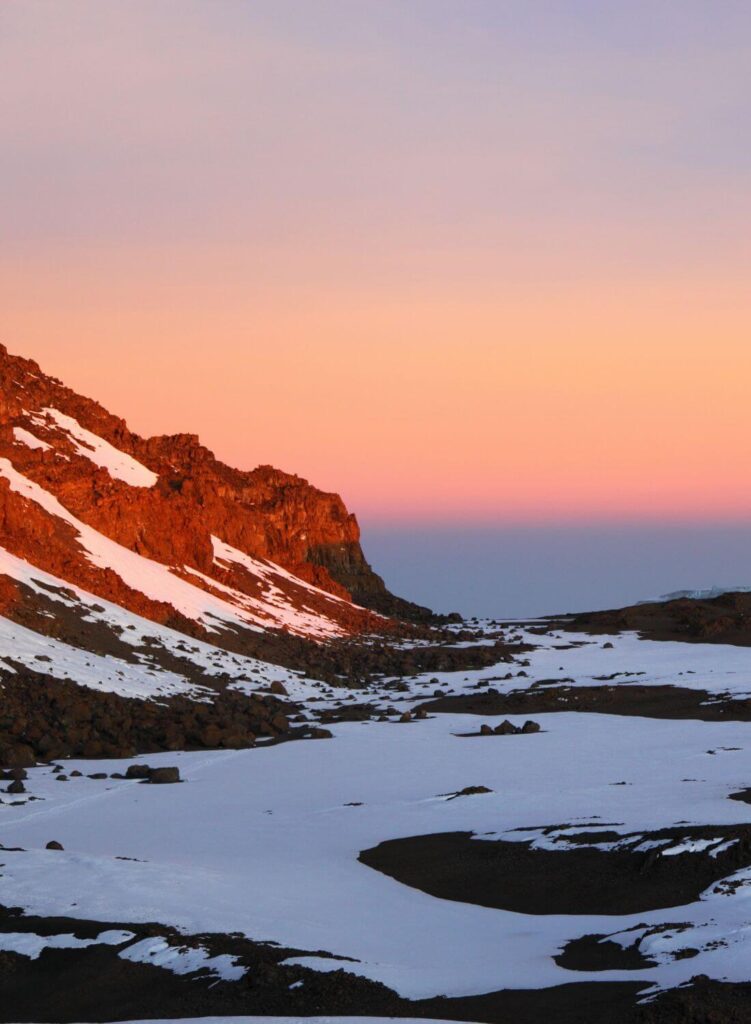
Preparing for Your Kilimanjaro Climb – How to Make Your Adventure a Success
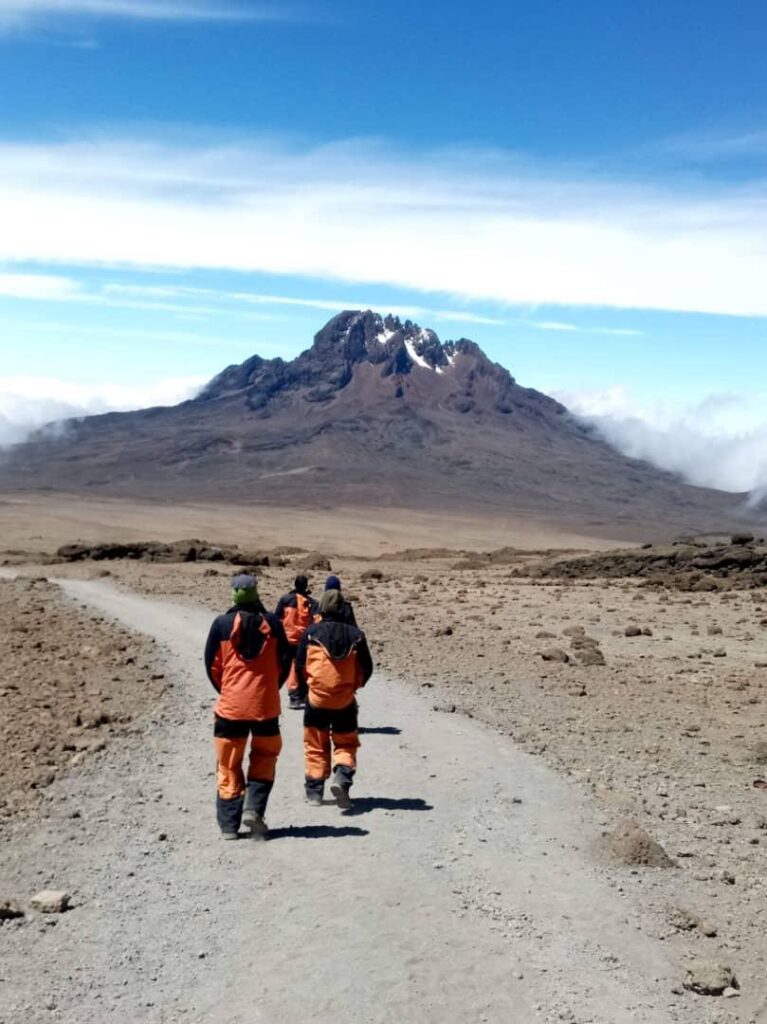
A successful Kilimanjaro climb starts with the right preparation – physically, mentally, and logistically. The better prepared you are, the more relaxed and safe your journey to the summit will be. Solid Kilimanjaro preparation isn’t rocket science, but it should begin early.
First and foremost, a good base level of fitness is essential. You don’t need to be an athlete, but regular hiking, endurance training, and practicing elevation gains will help your body adapt to the demands of the trek. Longer day hikes with a backpack are also a great way to realistically prepare for the daily stages.
Equally important is the right gear: well-worn hiking boots, breathable clothing for varying climate zones, a reliable daypack, and warm equipment for the cold nights on the mountain. We’ll support you with a detailed packing list and personalized recommendations.
Mental strength is just as vital as physical conditioning. Patience, perseverance, and the will to keep going even when you’re tired or cold are key – especially on summit night.
And last but not least: choosing the right route. We offer honest, tailored advice on which trail suits your fitness level and travel plans best. With Wildfinder, you’ll have an experienced team by your side that ensures you’re well prepared and always supported.
Costs and Budget Planning – Fair and Transparent
Climbing Mount Kilimanjaro is a once-in-a-lifetime experience – and with us, you get the perfect balance of value for money. The cost of a Kilimanjaro climb is made up of several components: including park fees, payment for guides and porters, accommodation and meals on the route, as well as transfers and equipment.
At Wildfinder Tours & Safaris, you receive a complete package that not only includes all essential services, but also stands out through comfort, experience, and the highest safety standards. Our guides speak your language, are highly trained, and bring real passion to every climb – and that makes all the difference.
We offer transparent consultation so you know exactly what you’re paying for – with no hidden costs. The cost of climbing Kilimanjaro varies depending on the route, duration, level of comfort, and whether you choose a Kilimanjaro safari combination. Our goal is to create a tailor-made adventure that fits your budget perfectly. You’ll find starting prices in our Kilimanjaro offers.
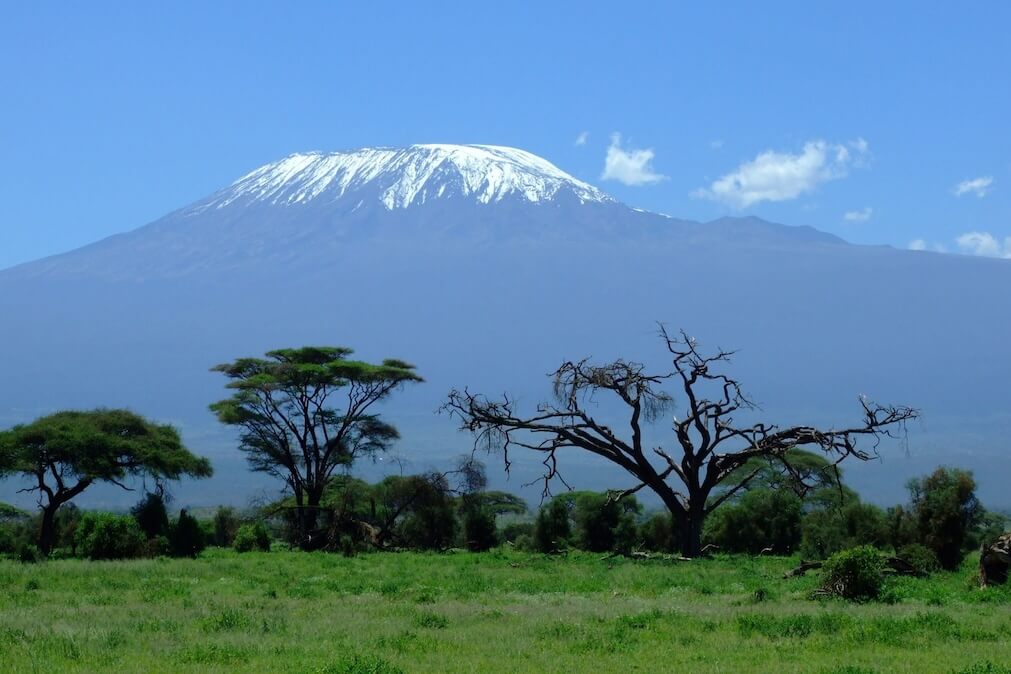
Kilimanjaro Packing List – What You Shouldn’t Leave Behind
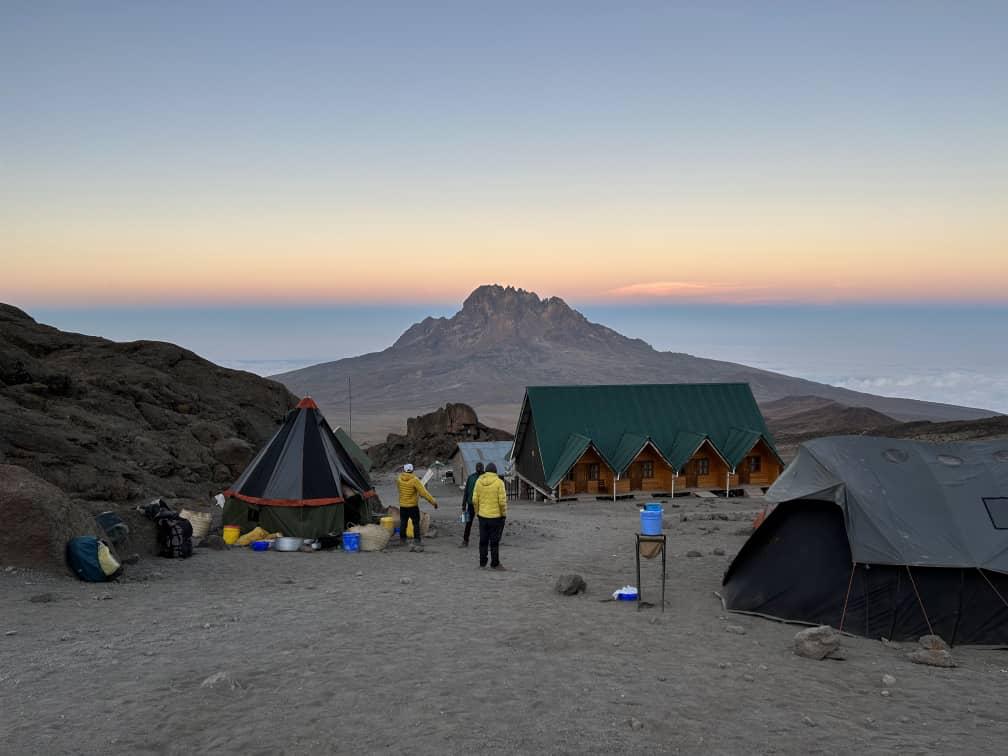
The right gear is essential for a safe and comfortable Kilimanjaro climb – after all, you’ll pass through a variety of climate zones on your way to the summit, from tropical humidity to icy cold. A well-thought-out Kilimanjaro packing list ensures that you’re well-prepared for every stage of the journey.
Must-haves include broken-in hiking boots, breathable layering clothes, a warm down jacket for summit night, rain and sun protection, gloves and a hat, as well as a high-quality sleeping bag for the cold nights in your tent. A headlamp, hydration system, snacks, and personal hygiene items are also important.
With our proven tips for climbing Kilimanjaro, we’ve put together a complete and practical packing list to guide you. This way, you’ll be fully equipped and ready for your adventure.
Altitude Sickness on Kilimanjaro Treks – Risks and Prevention
Anyone climbing Mount Kilimanjaro ventures into high altitudes – an environment the body must gradually adjust to. Altitude sickness can occur when this adaptation happens too quickly. Symptoms such as headaches, nausea, insomnia, or loss of appetite are warning signs that should be taken seriously.
The good news: with the right strategy, the risk can be significantly reduced. One of the most effective measures is choosing a route with good acclimatization – meaning enough days for your body to adapt slowly to the altitude. Staying well-hydrated, walking slowly, eating regularly, and listening to your body all play a vital role in reaching the summit safely and in good health.
Our experienced guides are trained in altitude management, monitor each trekker’s condition closely, and ensure safety throughout the climb. We plan your ascent to give you the best chance of reaching the summit successfully – without unnecessary risks.
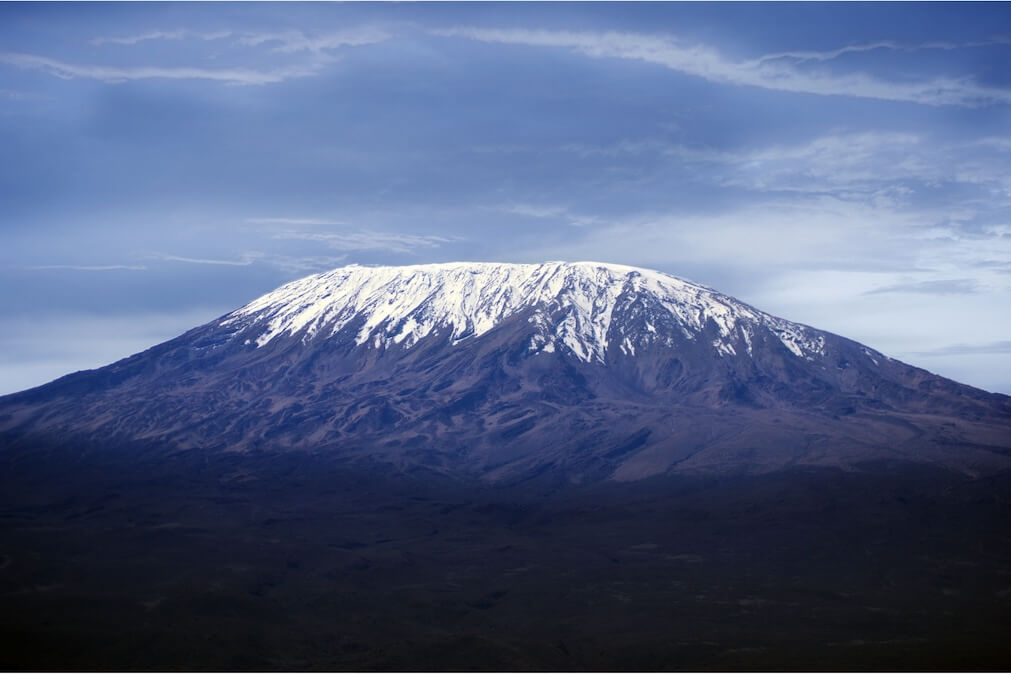
Kilimanjaro Accommodations – Functional and Close to Nature
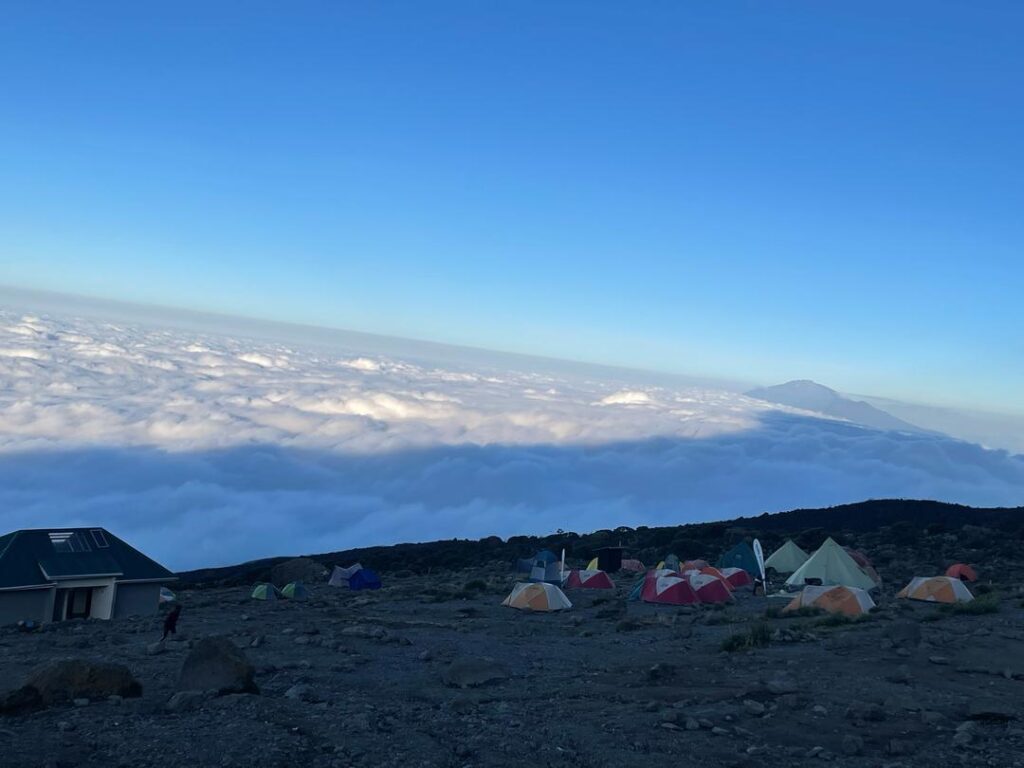
During your Kilimanjaro hike, you won’t be staying in hotels – instead, you’ll experience a unique kind of simplicity that’s part of the adventure itself. Depending on the route you choose, your nights will be spent either in tents or mountain huts.
On most Kilimanjaro routes such as Machame, Lemosho, or Rongai, you’ll sleep in sturdy trekking tents set up for you by our team. You won’t have to lift a finger – your sleeping spot will be ready for you at the end of each day, often in stunningly located camps with breathtaking views of the surrounding mountain landscape.
An exception is the Marangu Route, the only trail that offers fixed mountain huts. These basic accommodations come with mattresses and are especially popular with those who prefer more weather protection and a bit of added comfort. Whether it’s a tent or a hut – you’ll sleep high above sea level, right in the heart of nature, under the clear African night sky. It’s an unforgettable experience you’ll carry with you long after your journey ends.
The Myth of Kilimanjaro – History and Significance of the Mountain
Mount Kilimanjaro is more than just the highest mountain in Africa – it’s a symbol. A symbol of freedom, perseverance, and the longing for the horizon. For centuries, it has captivated people around the world: as a geological wonder, a spiritual place, and a challenge for adventurers. In the culture of the Chagga people, who live at the base of the mountain, Kilimanjaro is considered sacred. Its snow-capped summit – Uhuru Peak – rises like a crown above the savannah, steeped in respect, legends, and reverence.
Kilimanjaro was officially summited for the first time in 1889, yet it still carries a mystical aura. Ernest Hemingway dedicated his famous short story “The Snows of Kilimanjaro” to it. Climbers from all over the world come to experience it – and for many, that experience becomes life-changing.
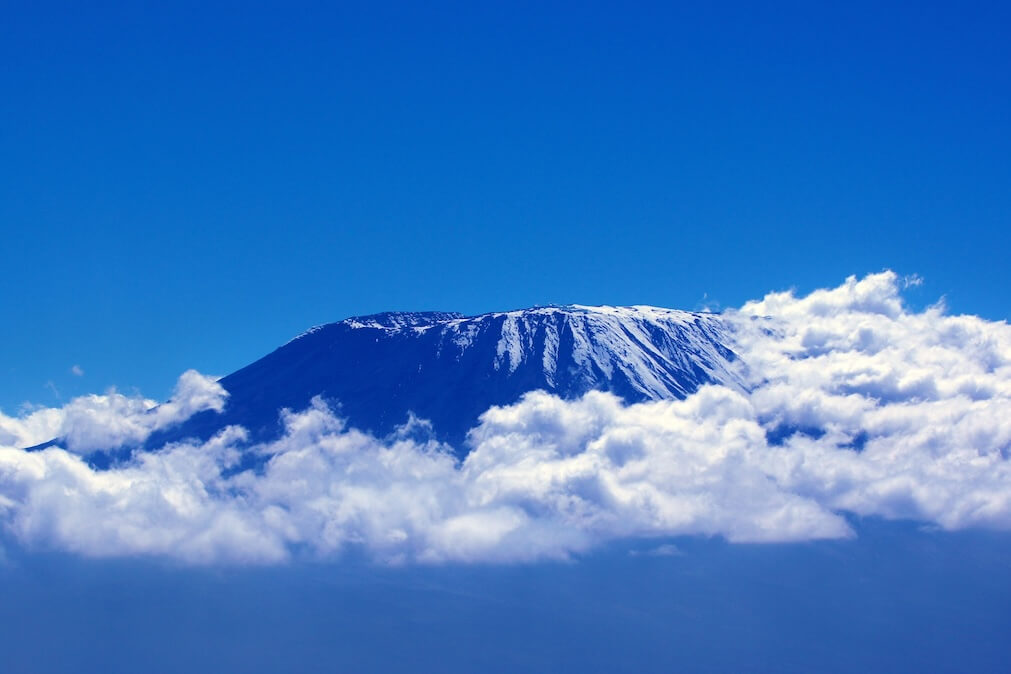
Facts About Mount Kilimanjaro
📍 Location:
- In northeastern Tanzania, near the border with Kenya
- Part of Kilimanjaro National Park (UNESCO World Heritage Site)
🏔️ <b>Elevation:</b>
- 5,895 m (19,341 ft) above sea level (Uhuru Peak)
- Tallest free-standing mountain in the world
- Highest point in Africa – one of the “Seven Summits”
🌋 <b>Geology:</b>
- Volcanic origin
- Composed of three extinct volcanoes:
- Kibo (central and highest peak – Uhuru Peak)
- Mawenzi (5,149 m – jagged secondary summit)
- Shira (3,962 m – largely eroded crater)
🧭 <b>First Ascent:</b>
- 1889 by Hans Meyer (Germany), Ludwig Purtscheller (Austria), and local guide Yohani Kinyala Lauwo
- Lauwo was just 18 at the time – and later climbed Kilimanjaro over 80 times
🛖 <b>Cultural Significance:</b>
- Sacred mountain to the Chagga people
- A place of spirits, ancestors, and spiritual power
- Symbol of strength, endurance, and majesty
🌿 <b>Vegetation & Climate Zones:</b>
- 5 climate zones, from tropical rainforest to glacial summit
- Over 1,200 plant species and rare animals like the Kilimanjaro mouse, servals, and colobus monkeys
👣 <b>Trekking & Tourism:</b>
- Over 50,000 people attempt the summit each year
- Success rate varies by route and acclimatization (60–95%)
- Most popular routes: Marangu, Machame, Lemosho, Rongai, Northern Circuit
🎒 <b>Fun Facts:</b>
- “Uhuru” means “freedom” in Swahili – the summit was named in 1961 after Tanzania’s independence
- The glacier at the summit is over 11,000 years old – now severely threatened by climate change
- Kilimanjaro appears on Tanzanian beer labels and banknotes
- Fastest recorded ascent: about 6 hours (!) – by an elite athlete under extreme conditions
- You can start the climb in tropical heat and reach a glacier summit within the same week
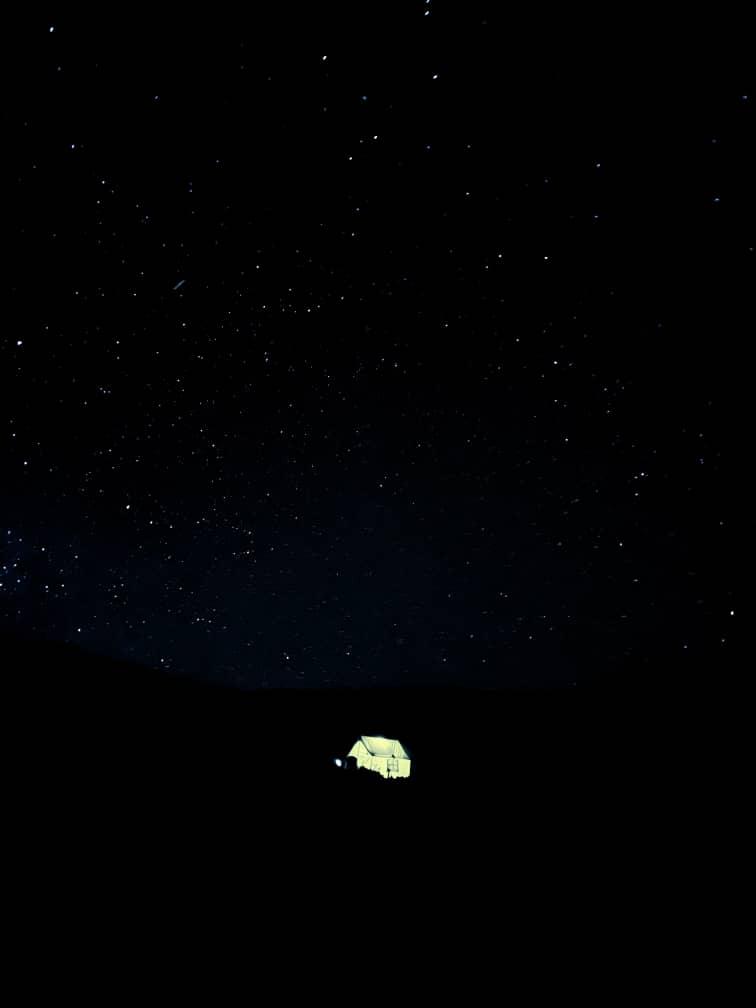
FAQ
How Difficult Is Climbing Mount Kilimanjaro Really?
What Happens if I Experience Health Issues During the Climb?
What Food and Drink Should I Bring?
How Challenging Is Summit Day?

